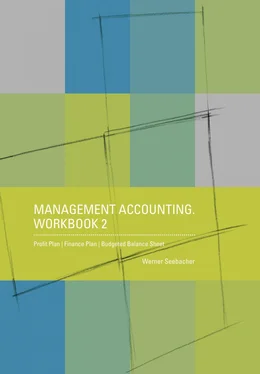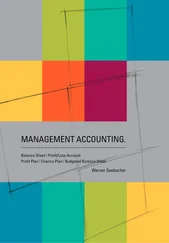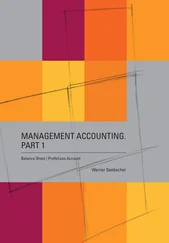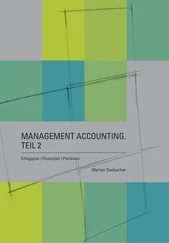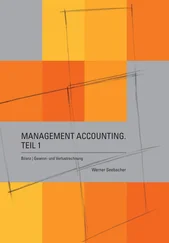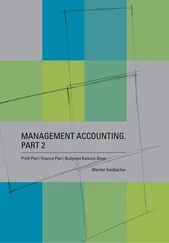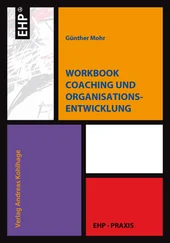Werner Seebacher
Management Accounting.
workbook 2
Profit Plan | Finance Plan | Budgeted Balance Sheet
Author
Werner Seebacher
ISBN 978-3-752985-21-4
First Edition 2020
www.management-accounting.net
Prohibition of photocopy | Prohibition of multiplication
The free use of this book – rule of multiplication for use in schools and universities – cannot be applied on this book, as it has been intended for individual teaching purposes from its quality and its specification (see § 42 Abs 6 öUrhG; § 53 Abs 3 dtUrhG). Any multiplication can be fair use only with prior approval by the author.
Disclaimer of liability
Please note that despite careful processing all data, annotations, presentations and calculations in this book, as well as in the numerical examples given, are made without warranty and that the author refuses to accept any liability.
Copyright | Licensing agreements
This e-book is a work of own, intellectual creation according to § 1 Abs 1 öUrhG or § 1 dtUrhG respectively and like that, it is subject to the Act Concerning the Protection of Copyright öUrhG or dtUrhG respectively for works of language. All rights, particularly the right for duplication, distribution and translation is subject to authorization. No part of this work may be reproduced in any form without prior consent of the author, it must not be duplicated, processed or distributed by means of electronic systems. The user of an e-book is only authorized to read the contents of this e-book. The e-book must not be saved as a whole, sent by e-mail or printed out without consent of the author (§ 42 Abs 8 öUrhG; § 53 Abs 4 dtUrhG).
Download
By downloading the e-book the user commits himself to acknowledge and adhere to the copyright, utilization rights and all other property rights. The user particularly commits himself to download this work of own, intellectual creation only once for personal use.
FOREWORD 
“Management Accounting. Workbook 2 – Profit Plan | Finance Plan | Budgeted Balance Sheet” is based on the textbook “Management Accounting.”. It is meant to be a supplement to the textbook “Management Accounting.” and to the “Workbook 1 – Balance Sheet | Profit/Loss Account”.
The textbook “Management Accounting.” deals with the “Big Picture” – the Accounting/Controlling Overall Context – as well as with the elements presenting this connection: Balance Sheet | Profit/Loss Account | Profit Plan | Finance Plan | Budgeted Balance Sheet.
In the “Workbook 2 – Profit Plan | Finance Plan | Budgeted Balance Sheet” the effects of concrete accounting/controlling activities and business cases in and on profit plan, finance plan and budgeted balance sheet are presented and explained. The presentation is in form of case studies.
Following the examples which deal with individual business activities each, the mathematical connections between profit plan, finance plan and budgeted balance sheet are presented in a comprehensive case study.
“Management Accounting. Workbook 2 – Profit Plan | Finance Plan | Budgeted Balance Sheet” is directed towards students and practitioners – to students doing business courses in the framework of their basic education or their introductory semesters respectively, to students doing postgraduate programs as well as practitioners in management jobs.
Table of Contents

Introduction and Survey of the Contents
Numerical Examples
1. Foundation of an Enterprise
2. Capital Increase
3. Dividend
4. Investment
5. Financing
6. Investment and Financing
7. Purchase/Use of Goods, Turnover/Sales, Bank Account
8. Purchase/Use of Goods, Turnover/Sales, Receivables, Liabilities
9. Deferred Charges
10. Deferred Charges, Subsequent Year
11. Deferred Charges, Subsequent Year, Continuation
12. Deferred Income
13. Deferred Income, Subsequent Year
14. Deferred Income, Subsequent Year, Continuation
15. Provision, Formation
16. Provision, Reversal
17. Provision, Payment
18. Asset Disposal
19. Sale and Lease Back
20. Goods on Own Account
Case Study
Author
Method
List of Relevant Literature
Index of Figures
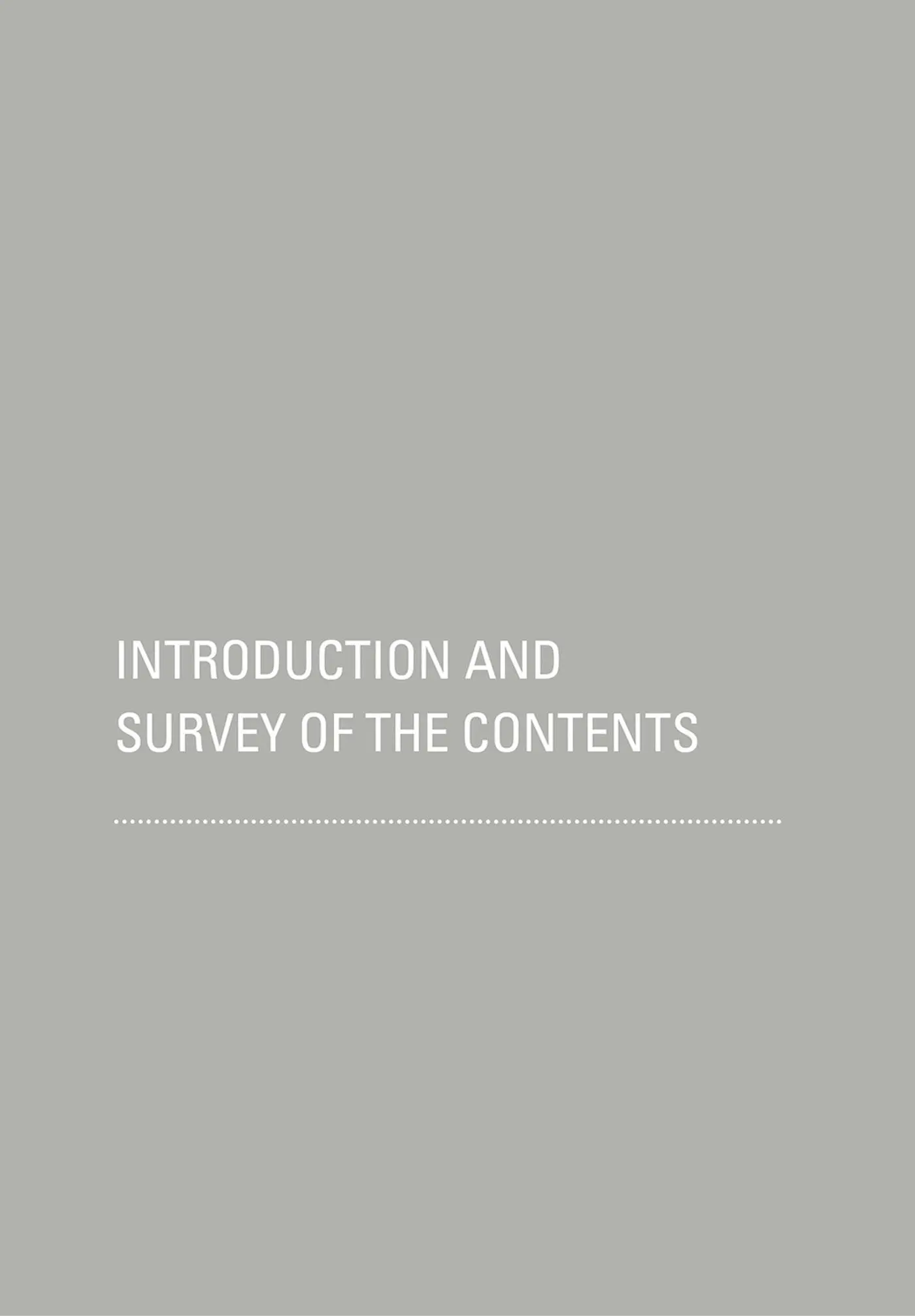
Introduction and Survey of the Contents

The textbook “Management Accounting.”, which forms the basis for the “Workbook 2 – Profit Plan | Finance Plan | Budgeted Balance Sheet” gives a comprehensive overview on the topic Accounting/Controlling. It deals with the contents of and the connections between the accounting/controlling elements Balance Sheet, Profit/Loss Account, Contribution Margin Costing, Results Statement, Profit Plan, Finance Plan and Budgeted Balance Sheet.
The approach which is used in “Management Accounting.” communicates the “Accounting/Controlling Overall Context”. It is based on the consideration that two central elements form the basic structure for the presentation of business activities in accounting/controlling of an enterprise:
The first of these two connections is the basic connection between Balance Sheet and Profit/Loss Account. This connection is dealt with – in form of case studies – in the “Workbook 1 – Balance Sheet | Profit/Loss Account”.
The second central connection is based on the interaction of the components result (profit or loss respectively), liquidity (financial solvency) and balance sheet and is represented – in a future-oriented way – by the elements Profit Plan, Finance Plan and Budgeted Balance Sheet. This connection is presented in the “Workbook 2 – Profit Plan | Finance Plan | Budgeted Balance Sheet” in its concrete numerical effects.
The connections described can be applied independent of national and international trade and tax law regulations and like that, they can be applied universally.
In the “Workbook 2 – Profit Plan | Finance Plan | Budgeted Balance Sheet” business activities in enterprises are communicated in form of case studies or numerical examples respectively; they present and annotate the concrete numerical effects of these business activities in and on profit plan, finance plan and budgeted balance sheet – step by step and in detail.
For doing so numerical examples are used which have already been introduced basically in the textbook “Management Accounting.” and which are now presented in the “Workbook 2 – Profit Plan | Finance Plan | Budgeted Balance Sheet” in more detail and in individual steps. Additional numerical examples are presented leading further beyond, presenting additional typical business activities or business cases in enterprises.
Supplementing the examples which deal with individual business activities each, the connections between profit plan, finance plan and budgeted balance sheet are presented in a comprehensive case study. In the case study, on the one hand, the mathematical connections between profit plan, finance plan and budgeted balance sheet are to be presented, on the other hand, by developing the case study step by step, the typical procedure in the framework of compiling a budgeting calculation is to be demonstrated.
Читать дальше
